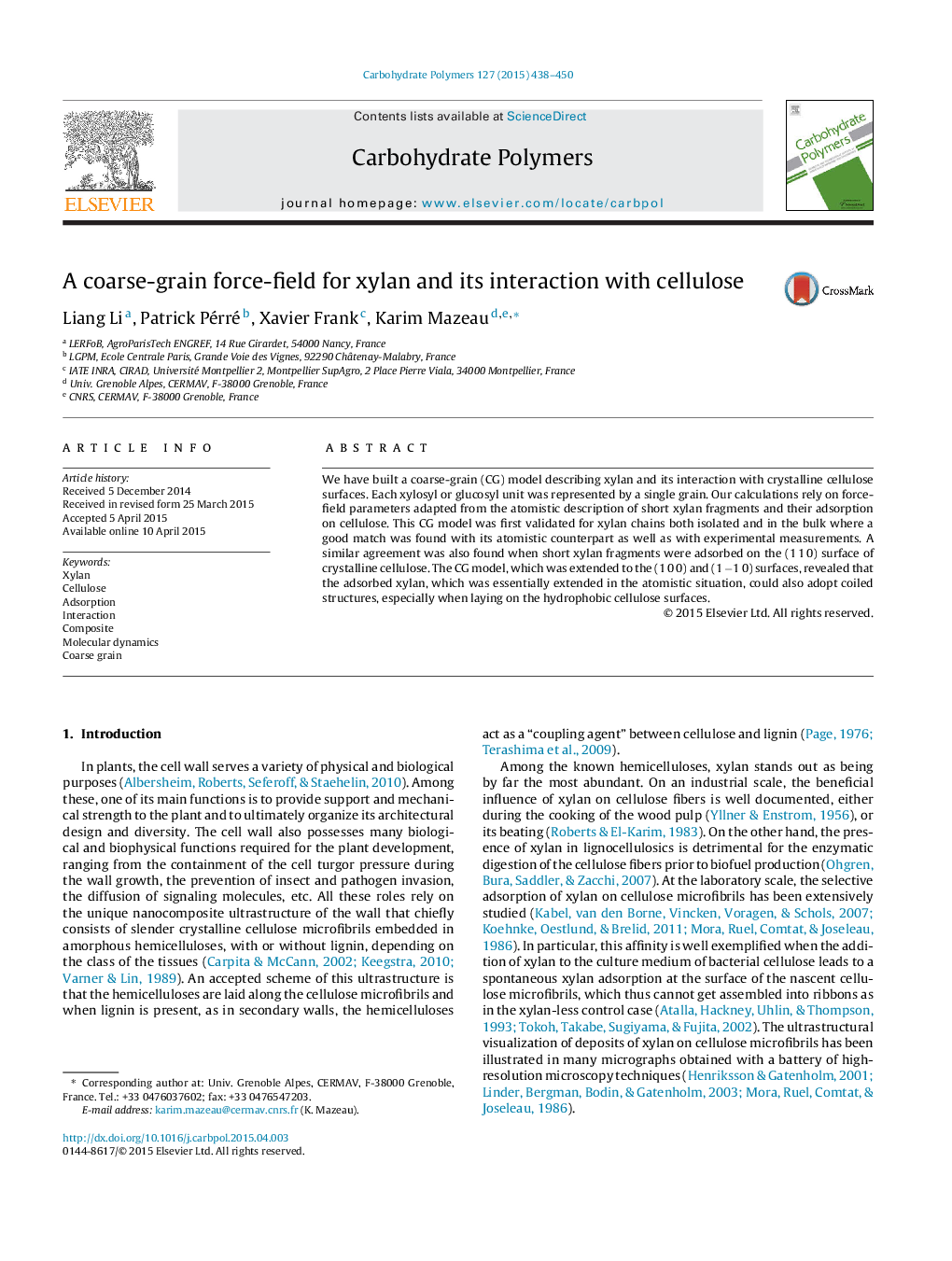| Article ID | Journal | Published Year | Pages | File Type |
|---|---|---|---|---|
| 7788574 | Carbohydrate Polymers | 2015 | 13 Pages |
Abstract
We have built a coarse-grain (CG) model describing xylan and its interaction with crystalline cellulose surfaces. Each xylosyl or glucosyl unit was represented by a single grain. Our calculations rely on force-field parameters adapted from the atomistic description of short xylan fragments and their adsorption on cellulose. This CG model was first validated for xylan chains both isolated and in the bulk where a good match was found with its atomistic counterpart as well as with experimental measurements. A similar agreement was also found when short xylan fragments were adsorbed on the (1Â 1Â 0) surface of crystalline cellulose. The CG model, which was extended to the (1Â 0Â 0) and (1Â â1Â 0) surfaces, revealed that the adsorbed xylan, which was essentially extended in the atomistic situation, could also adopt coiled structures, especially when laying on the hydrophobic cellulose surfaces.
Related Topics
Physical Sciences and Engineering
Chemistry
Organic Chemistry
Authors
Liang Li, Patrick Pérré, Xavier Frank, Karim Mazeau,
